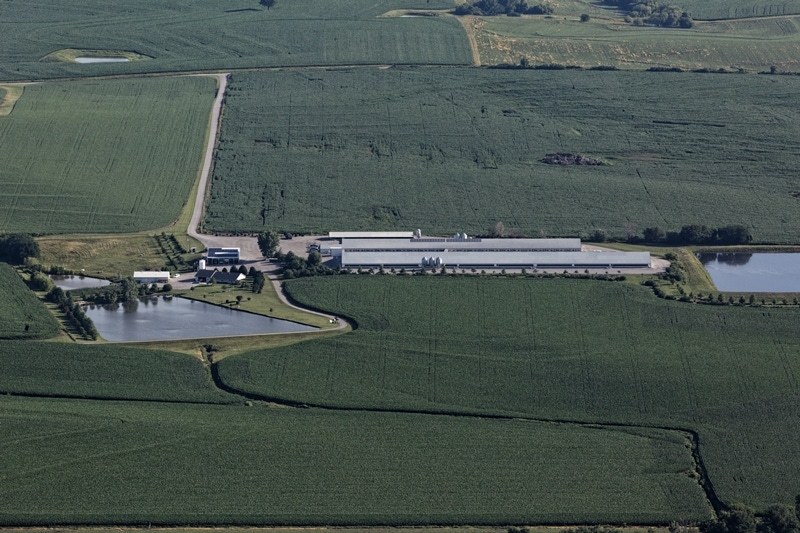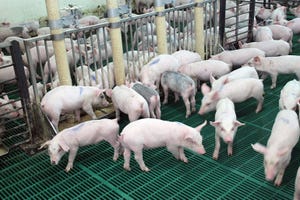EPA and Corps share highlights of the latest draft of WOTUS sent for review.

U.S. Environmental Protection Agency and the U.S. Army Corps of Engineers sent a draft Clean Water rule (commonly known as Waters of the U.S.) to the Office of Management and Budget for inter-agency review on April 3.
Providing the proposed rule is not finalized, the latest version is not available for the public. EPA administrator Gina McCarthy and assistant secretary of the Army Jo-Ellen Darcy posted highlights in a blog posted on EPA Connect.
A year ago, a draft rule was published by the agencies in the federal registry and opened for public comment. Since then, more than one million public comments were received from a wide range of stakeholders including farmers, agriculture organizations and business owners.
According to McCarthy and Darcy, the input from more than 400 meetings and public comments shaped the final rule.
“The input helped us understand the genuine concerns and interests of a wide range of stakeholders and think through options to address them,” stated McCarthy and Darcy. “In the final rule, people will see that we made changes based on those comments, consistent with the law and the science.”
Furthermore they are certain the final rule will speak for itself. Key points and changes currently be considered:
Better defining how protected waters are significant. A key part of the Clean Water Rule is protecting water bodies, like streams and wetlands, which have strong impacts downstream — the technical term is “significant nexus.” We will respond to requests for a better description of what connections are important under the Clean Water Act and how agencies make that determination.
Defining tributaries more clearly. We’ve heard feedback that our proposed definition of tributaries was confusing and ambiguous, and could be interpreted to pick up erosion in a farmer’s field, when that’s not our aim. So we looked at ways to refine that definition, be precise about the streams we’re talking about, and make sure there are bright lines around exactly what we mean.
Providing certainty in how far safeguards extend to nearby waters. The rule will protect wetlands that are situated next to protected waterways like rivers and lakes, because science shows us they impact downstream waters. We will provide a clear definition about what waters are considered adjacent waters.
Being specific in the protection of the nation’s regional water treasures. We heard concerns that the category we called “other waters” in the rule was too broad and undefined. We’ve thought through ways to be more specific about the waters that are important to protect, instead of what we do now, which too often is for the Army Corps to go through a long, complicated, case-by-case process to decide whether waters are protected.
Focusing on tributaries, not ditches. We’re limiting protection to ditches that function like tributaries and can carry pollution downstream — like those constructed out of streams. Our proposal talked about upland ditches, and we got feedback that the word “upland” was confusing, so we’ll approach ditches from another angle.
Preserving Clean Water Act exclusions and exemptions for agriculture. We will protect clean water without getting in the way of farming and ranching. Normal agriculture practices like plowing, planting and harvesting a field have always been exempt from Clean Water Act regulation; this rule won’t change that at all.
Maintaining the status of waters within Municipal Separate Storm Sewer Systems. We will also continue to encourage the use of creative solutions like green infrastructure and low-impact development, as many of these communities have advocated.
In written testimony to the U.S. Senate Agriculture, Nutrition and Forestry committee in regards to the rulemaking on defining “Waters of the U.S.”, the National Pork Producers Council stated within the system already in place under the Clean Water Act the point and nonpoint tools the EPA currently have established for states, counties, cities and pork producers are adequate for maintaining and improving water quality.
Nevertheless, jurisdictional clarification is needed.
“There are, undoubtedly, vexing Clean Water Act jurisdictional questions under the law and applicable court decisions. We all need and want more jurisdictional clarity, and we understand the need for a rule that addresses this,” the NPPC stated in written testimony submitted March 26.
Upstream features jurisdiction questioned
The NPPC emphasized that pork producers embrace their responsibility to make sure manure is managed properly to protect the water quality of downstream. Moreover, hog operations are already regulated under the Clean Water Act through Concentrated Animal Feeding Operation rules.
Therefore, the NPPC explained “There is no need to make those remote or intermediate water features subject to federal jurisdiction to have producers work on the movement or manure nutrients through them. The Clean Water Act already does that.”
EPA Administrator McCarthy in speech to farmers stressed the agency has no intention to impose additional restrictions through final rulemaking.
In response to this statement, the NPPC proposed this question: “If that is the case, what is gained by making these upstream features jurisdictional when they have no real place, in and of themselves, in the Clean Water Act’s aspirational scheme?”
A question that will not be truly answered until the review is completed and the actual final rule is published.
About the Author(s)
You May Also Like



